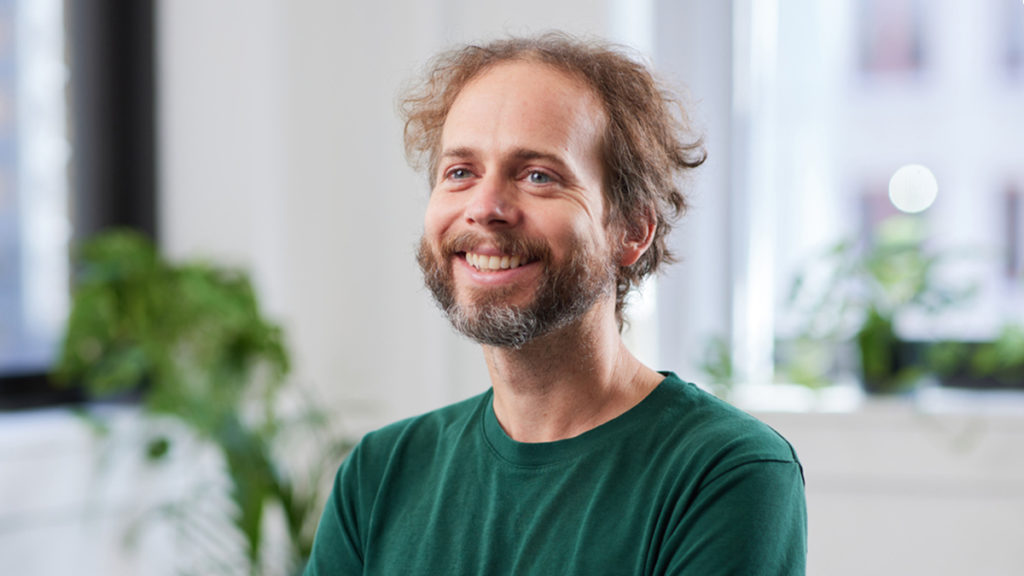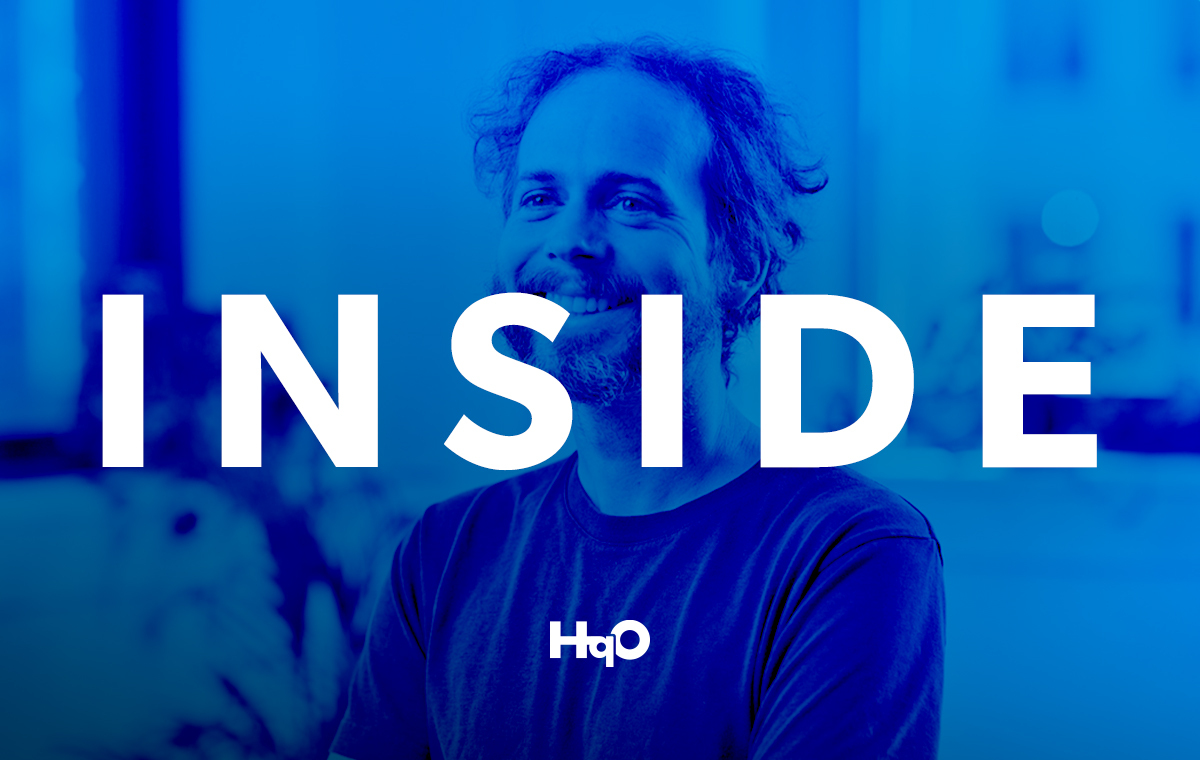Nick Whalen
Director of Engineering at HqO
As Director of Engineering, Nick leads HqO’s Platform Integration teams and the Delivery Management organization. Before joining the company, he was an Engineering Manager at Bitsight, a Boston-based startup. Along with his work experience, Nick has a Masters of Science in Computer Science from Northeastern University, and a Bachelors of Science in Computer Science from the University of Nevada – Las Vegas. He’s been with HqO for almost three years.

Thanks again for joining me, Nick. Could you start things off by describing your day-to-day for us? What does your work usually involve?
Absolutely. Some portion of my day is spent working with Product Managers to understand our customers’ needs and business priorities. I also spend a lot of time working with Team Leads and Engineering Managers pushing for iterative development, continuous delivery, and architectural excellence. On the metrics side, I make sure that we’re measuring the right things to ensure that features ship quickly and with high quality. I also devote significant time developing and coaching up the next set of engineering leaders in HqO.
Did you have any previous real estate experience or knowledge before coming to HqO?
I didn’t have commercial real estate experience when I arrived to HqO, but I have worked in a number of really different offices all around the world — I think that experience has helped inform the work I do here. I’ve worked in physical spaces at startups in Boston, Tokyo, Raleigh, and Vegas, for example, and those different cultural experiences have given me an interesting perspective on the value of physical spaces. In particular, my experiences working in these different kinds of offices and environments have helped me get a really clear understanding of the value of physical spaces for doing team-based work.
I’ve realized over the years that collaboration, trust, and overall enjoyment of work increases when we work near each other, and our technology is important to our customers because it helps people do just that.
But physical proximity isn’t the entire equation, right? On a basic level, the goal of our product is to help people connect more effectively with each other and with the world around them. So, our technology doesn’t just help increase the number of personal connections an employee might have, it also helps improve the quality of those connections, which ultimately helps our customers achieve their long-term goals.
The company has grown immensely over the course of your time here. What are some of the major changes you’ve witnessed?
Frankly, it’s bananas to think about how much growth I’ve seen here. When I started, we had three engineering teams, no microservices (an architectural pattern that breaks large “monolithic” systems into small, single-function, encapsulated services that can be individually deployed), and I think we were shipping to production manually every two weeks or so. That was hard.
Now we have 11 squads, which is a dramatic increase. We also ship to production multiple times a day (this is also known as a continuous delivery, a process that emphasizes automating testing, building, and deploying to production safely, quickly, and easily). We’ve also managed to build out an impressive collection of microservices and micro-frontends — so there’s just been a huge amount of growth.
One of the most important lessons I think that I’ve learned has been to embrace this idea of an adaptive, lightweight, agile process. Our framework for Engineering, Product, and Design (EPD) is agile to ensure that we deliver the right features on time with high quality. It is lightweight because our software development life cycle (SDLC) has just enough structure in terms of the ceremonies, the artifacts, and the expectations needed to ensure that we ship successful features without the additional bloat — or process for the sake of process — that slows down a lot of other engineering teams. And then it’s adaptive because it allows our teams the flexibility to suit their specific needs. Periodic retrospectives push each team to continually identify new ways to improve our speed, quality, and predictability sprint over sprint.
Can you talk a little bit about how your teams collaborate with folks in other departments? Is there another department at HqO that you collaborate with the most?
I think the right answer here is that we really collaborate with most teams. So, if I’m doing my job right, I’m interacting with most departments.
I believe a healthy engineering organization should work very collaboratively with several other departments to succeed. So that means all elements of EPD — that’s Engineering, Product, and Design — and I think we should throw another D in there, which is Delivery, because they’re super important to what we do in EPD. So those four organizations are all partners on a mission to better understand exactly what our customers need and what they want, and how they want to use our product and features. With that knowledge in hand, we can scope and hopefully de-scope projects to deliver the exact right solution. Our EPD teams plan and execute together with a focus on continuous delivery, which is one of my favorite things about the way that we operate.
We’re also big on this idea of “MVP and I” — those first set of initials are “minimum viable product” (MVP), and then the “I” at the end of the acronym just stands for “iterate.”
A MVP is essentially the basic standard that a product needs to get to market. So, the idea with “MVP & I” is to build the smallest feature that still satisfies the customer needs. And then, based on customer feedback and the response to that feature, we iterate over time to make it bigger, better, faster, and stronger. We try to get the best possible product to our customers as quickly as possible, with the quality of the product improving over time to address ongoing customer needs and concerns.
That’s excellent. Can you talk a little bit more about your recent projects? Anything particularly exciting you’ve been working on?
About a year and a half ago, my teams embarked on creating what we were calling mini-apps. Basically, this entailed breaking down our front-end monolith into smaller micro-frontends that are easier to test and maintain, and that also result in faster and less risky ships to production. That’s great for us because it allows our teams to release independently without impacting other teams. “Kill the monolith” is a popular phrase here, and that’s exactly what we get to do with these projects.
I love engineering projects like these. They allow our business to move as fast as it needs to win, while also giving our teams the agility to respond to customer feedback quickly and effectively.
A year and a half later, our mini-apps now give individual users the ability to book flex spaces, register for gym memberships, book appointments, and register for events and classes in the office. They also offer expanded opportunities for submitting help requests for things that break or need attention around the office. This was such a successful pattern that we’ve since baked it into a lot of our new features like feedback and wallets as well.

Can you think of any unique ways that landlords or corporate employers are using HqO’s product?
Absolutely. We recently added a feature to our product that allows for two-way communications on help requests. So, if something’s wrong in the office and needs to be fixed — like a leak with a pipe, or a problem with the elevator — you can use our app to send a request to your landlord to fix it, and then you can even open a conversation with back and forth communication, which helps to streamline the whole service request process. So, it brings this new level of collaboration, where people can really work together instead of just creating a request ticket and throwing it over the wall. I like that we’re able to facilitate this kind of contact to bring people closer together, which is one of our overarching goals as a company.
On a very macro level, our objective is to reinforce the existing social infrastructure with technology that makes physical experiences more meaningful and less chaotic. This aspect of our product is just one of many different ways that we’re working to achieve that goal.
In your words, how is workplace experience technology shaping the future of work?
As most companies move towards the hybrid model of in person work, they immediately run into really hard problems with things like coordinating in-person team meetings, given everyone’s flexible schedules, or they run into issues with booking “flex” space like desks and conference rooms. They might also have problems getting insights into how amenities are being used differently, now that employers have embraced the hybrid model.
These are all problems that I think technology — specifically our technology — can help solve. I think we, at HqO, are aiming to empower the employees and the companies to make better, more informed decisions about where and how they work together.
Inside HqO pulls back the curtain and introduces you to the people who make HqO the undisputed leader in workplace experience technology. For more information on HqO, click here. If you’re interested in joining Nick and the HqO team, check out all of our current openings here.



